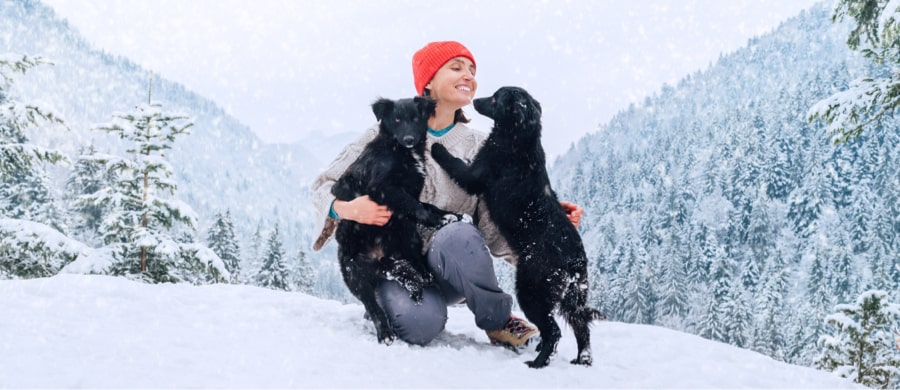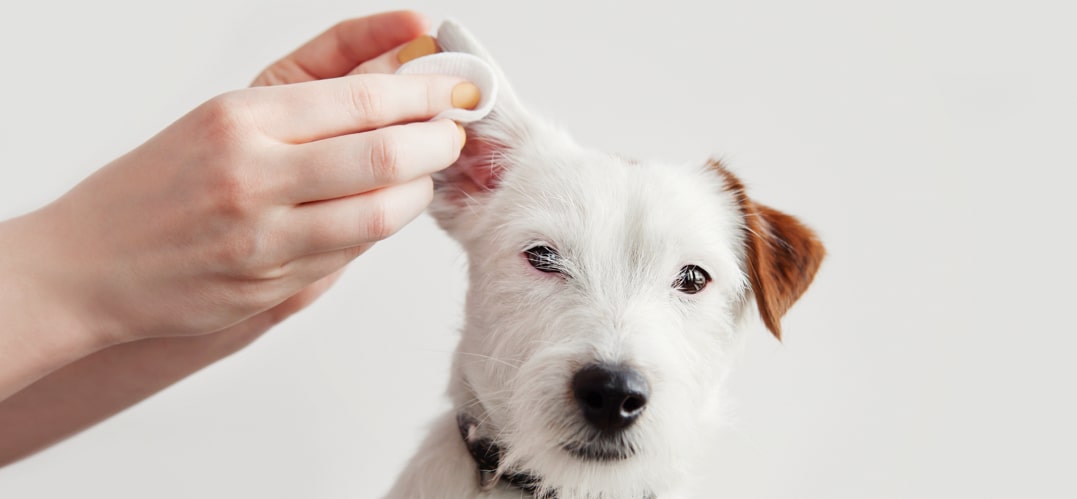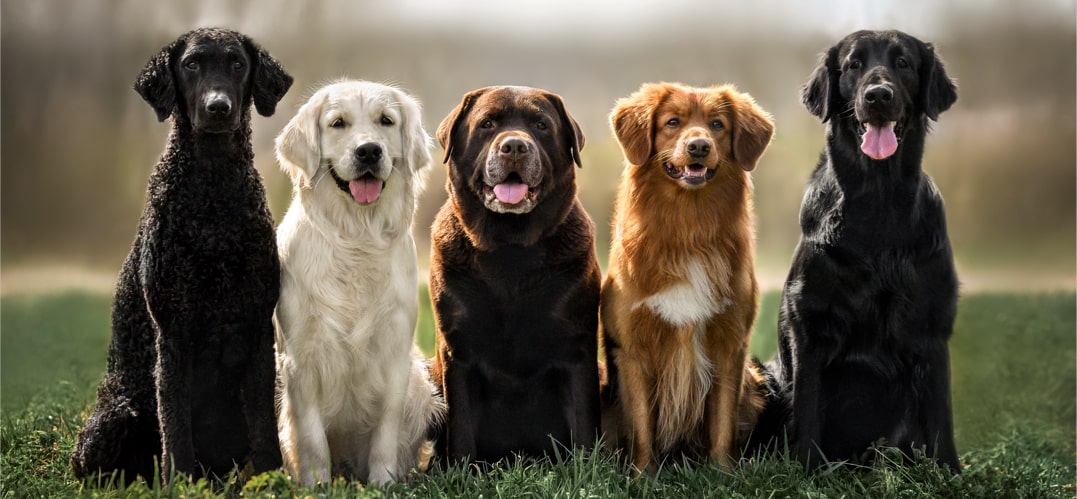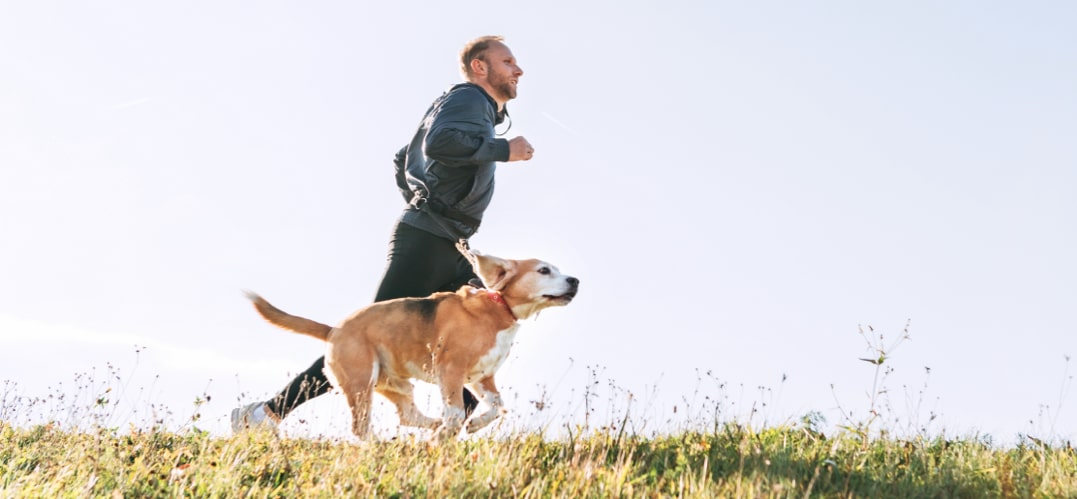As the winter chill takes hold, responsible dog owners recognise the importance of ensuring their furry companions stay warm and cosy. This comprehensive winter dog care guide offers insights and tips to keep your dogs happy and secure during the colder months.
Winter Dog Safety Basics
Ensuring your dog's safety during winter extends beyond warmth; it's about creating a secure environment. Adequate shelter is paramount, whether your dog resides indoors or outdoors. Indoor pups benefit from cosy, draft-free spaces with ample bedding. For outdoor dogs, insulated dog houses shield them from the elements.
Awareness of winter hazards is crucial. Salt and de-icing chemicals on sidewalks can harm your dog's paws. Wipe their paws after walks and consider using pet-safe ice melt. Be cautious of frozen bodies of water, as ice may not be as stable as it appears.
Regular veterinary check-ups are vital for winter wellness. Cold weather can exacerbate existing health issues. Ensure vaccinations are up-to-date, and discuss any concerns with your vet. A healthy dog is better equipped to handle the challenges of winter.
Cold Weather Dog Tips
Winter walks are essential for canine exercise and mental stimulation, but keeping your dog warm is crucial. Doggy jackets provide insulation, especially for short-haired breeds. Boots protect paws from ice, salt, and freezing temperatures. Consider your dog's breed – smaller or hairless breeds may need extra layers.
Adjusting your walking routine can make a significant difference. Aim for midday walks when temperatures are slightly higher. Avoid prolonged exposure during the coldest parts of the day. If walks are limited, engaging indoor activities can keep your dog active and happy.
Insulating Dog Houses
Outdoor dogs need special attention to combat winter's chill. The foundation of their winter haven is a well-insulated dog house. Opt for materials like wood or plastic, providing a barrier against the cold. Proper placement is key – situate the house away from prevailing winds and on a raised platform to avoid dampness.
Consider additional measures to trap warmth. Add a layer of straw or bedding inside the house for insulation. Ensure the entrance faces away from the wind to minimise drafts. Regularly check for any cracks or openings that may compromise the insulation.
Winter Dog Clothing and Gear
As temperatures drop, ensuring your dog stays warm during outdoor activities becomes imperative. Winter clothing and gear are essential components of their comfort. Sweaters and coats are excellent choices, providing an extra layer of insulation. Choose options made from water-resistant materials to protect against snow and drizzle.
Boots are a game-changer in winter, safeguarding your dog's paws from ice, salt, and abrasive surfaces. When selecting the right size, ensure a snug fit without restricting movement. Consider your dog's breed and activity level – more active dogs may benefit from a more flexible boot design.
Frostbite Prevention for Dogs
Frostbite is a real concern in cold weather, especially for a dog's extremities. Educate yourself on the signs, including pale or grey skin, coldness to the touch, and swelling. Pay particular attention to vulnerable areas like ears, paws, and tails.
Preventing frostbite involves strategic measures. Limit outdoor time during extreme cold, focusing on midday walks. Invest in protective gear like doggy jackets and boots. Ensure your dog has a warm, dry place to rest after outdoor activities. Regularly inspect their skin for any signs of frostbite, seeking veterinary attention if needed.
Snow and Ice Paw Protection
Safeguarding your dog's paws is crucial in snowy and icy conditions. Booties are effective in protecting against salt and cold surfaces. Apply paw wax as an additional barrier – it forms a protective layer, preventing ice and snow from accumulating between paw pads.
Simple at-home paw checks are essential. After walks, wipe your dog's paws with a damp cloth to remove salt and ice melt. Inspect for any cuts, cracks, or signs of irritation. Keeping their paws clean and protected ensures a comfortable winter experience for your canine companion.
Cold-Weather Dog Health
Maintaining your dog's overall health during winter involves a holistic approach. Adequate nutrition is key – consider adjusting their diet to accommodate the energy needed to stay warm. Ensure they have access to fresh water, as hydration is crucial even in cooler temperatures.
Regular exercise remains important. While outdoor activities may be limited, engaging in indoor exercises and mental stimulation is essential. Monitor your dog for signs of stiffness or discomfort, adapting their routine accordingly.
Winter Dog Grooming
Grooming plays a pivotal role in your dog's winter care routine. Regular coat maintenance is crucial, as a well-groomed coat provides better insulation. Brush your dog more frequently to remove loose hair and prevent matting.
Paw care is equally important. After walks in wet conditions, thoroughly dry your dog's paws to prevent irritation and infection. Trim excess hair between paw pads to minimise the risk of ice buildup.
Invest in a quality dog-friendly shampoo to maintain skin health during winter. If your dog enjoys playing in the snow, check for ice balls or debris caught in their coat and paws.
By incorporating these grooming practices into your winter routine, you'll not only keep your dog looking and smelling fresh but also contribute to their overall well-being during the colder months.
Indoor Activities for Dogs in Winter
When outdoor adventures are limited, keeping your dog mentally and physically stimulated indoors is crucial. Interactive toys, such as puzzle feeders or treat-dispensing balls, engage their minds while providing a tasty reward. Indoor agility courses, using household items as obstacles, can offer a fun and energy-burning activity. Regular playtime, whether with toys or a game of fetch, maintains a healthy exercise routine. Consider introducing new tricks or commands – mental stimulation is just as important as physical activity.
Heating Options for Outdoor Dog Areas
Ensuring your outdoor dog stays warm in winter involves providing adequate heating options. Heated beds or mats offer a cosy spot for your dog to rest. Safe heat lamps, strategically placed in their shelter, provide warmth without compromising safety. Consider the power source – some options may require access to electricity, while others operate on battery power. Regularly check and monitor these heating elements to ensure they function properly and safely.
Choosing Dog-Friendly Winter Gear
Selecting the right winter gear for your dog is essential for their comfort and well-being. Size matters – choose gear that fits snugly without restricting movement. For smaller or short-haired breeds, opt for items that provide extra insulation. Consider the local climate – waterproof gear is crucial in wet conditions, while well-insulated coats are vital in colder regions. Keep your dog's breed in mind – breeds with thinner coats may require additional layers, such as sweaters or jackets.
Cold-Sensitive Dog Breeds
Certain dog breeds are more susceptible to the cold, requiring extra care during winter. Breeds like Greyhounds, Chihuahuas, and Whippets have thinner coats and less body fat, making them more vulnerable to low temperatures. Provide these dogs with additional layers, such as sweaters or coats, and limit their exposure to extreme cold. Recognising and addressing the specific needs of cold-sensitive breeds ensures their well-being during winter.
DIY Dog Blankets for Winter
Crafting a cosy blanket for your dog is a heartwarming and practical DIY project. Choose warm, durable fabric – fleece is an excellent option. Cut the fabric to your desired size, considering your dog's comfort. For added flair, consider tying fringes around the edges. Personalise the blanket with your dog's name or paw prints for that extra touch of love. A DIY blanket not only keeps your dog warm but also becomes a cherished item that reflects your care and creativity.
Conclusion
As winter blankets the world in frost, our furry companions need a little extra care to ensure they thrive in the chilly weather. By implementing the tips and insights shared in this Winter Dog Care Guide, you're not only safeguarding your dog's well-being but also fostering a season of joy, warmth, and unforgettable moments.
Remember, from choosing the right winter gear and insulating outdoor spaces to engaging in indoor activities and crafting personalised blankets, every effort contributes to your dog's comfort and happiness. Whether you have an energetic pup or a seasoned senior, tailoring your winter care routine to their needs ensures a season filled with wagging tails and contented woofs.
As the snow falls and temperatures drop, let this guide be your companion in creating a winter haven for your four-legged friend. Cherish the warmth of shared moments, whether it's a brisk winter walk or a cosy indoor cuddle. With these thoughtful measures, you're not just preparing your dog for winter – you're creating a season of lasting warmth and cherished memories for both of you. May your winter be merry, bright, and filled with the unmistakable joy that only a canine companion can bring.




